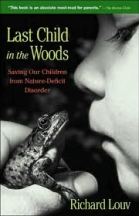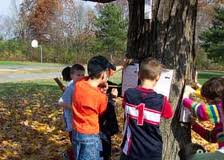Most of my thinking about literacy this week has been around one “simple” idea: students should be asking questions, and teachers should be showing them how. Across the readings this week I have gleamed a main idea of questioning for understanding. Whether it’s asking yourself which definition for a word makes sense in the context or implementing a “rigorous inquiry-based classroom of student generated questions” (Tovani, pg. 81), great readers don’t sit by passively and expect meaning to jump out at them, they instead question the text and infer meaning from inquiry.
Graves, Juels, & Graves talk about three main ways a students will gain understanding around reading, using context clue, using word parts, and using the dictionary (pg. 267). Reading this, I wondered (Tovani would be proud) if Graves, Juels, & Graves still believe that using the dictionary was one of the three most important ways to gain reading comprehension. It looks like the last edition of this book was 2011, not that long ago, but it seems that this thinking might be a little out of date. Don’t misunderstand me, I believe that all literate people should know how to navigate a dictionary, but when was the last time you picked up a dictionary in the search for a word’s spelling or meaning? No one really does that any more. I believe the point the authors are making is that students need to know how to research for information that is outside of what they can define by their own knowledge or context clues, but does it have to be a dictionary? Aren’t newer, and more tech derived, research processes more reflective of how students will really research information in their lives outside of school? Whichever tool we give our students in the search for meaning and comprehension in reading, we have to make sure that the process is repeatedly modeled and students have strong scaffolding in place. Tovani says that if an activity fails in her classroom, she knows that she didn’t’ model for her students enough (pg. 82).
To help students develop the skills of questioning text Tovani suggests asking questions after reading with students. This models for them and “encourage[s] more thinking and deeper analysis of the material” (pg. 86). Many times an author won’t tell the reader directly what is happening in a book or story. When this happens the reader won’t know what’s going on, unless he can make inferences based on evidence in the text. When a reader asks questions about what they already know in relation to the reading, it helps them come to reasonable inferences based on what clues the author is giving us without being explicit. Readers who ignore these clues, or textual evidence, “tend to rely solely on personal experience” (Tovani, pg. 99).
I thought of my reading buddy many times throughout these readings. Many students that I am currently, or have worked with in the past, have similar problems with finding deep meaning in text, but this unit on questioning the text really struck a chord in regards to the kind of reading my buddy has been doing. “G” reads fast. Many times he loses the meaning and context of the works he is reading because he is only focusing on decoding the works as fast as he can. And he can decode words very well, but many times he isn’t able to accurately infer based off clues in the text. After the story about the bird that helps the brothers home, we asked G to tell us why, based on the text, the bird helped the brothers. G’s answer was straight from his own personal experiences and feelings about birds. A previously self-proclaimed bird lover, G told us that the bird wanted to help the brothers because he was a nice bird and he really liked to help people. He went on to answer the question, “What if the boys hadn’t been able to find any worms for the bird?” with something about how the bird would have helped them anyways, he was just a little hungry. G is relying on his own personal experiences around birds instead of the clues in the text.
We decided to try practicing the process of questioning text to make predictions and inferences with our buddy during the next activity. We wanted G to read from a book and stop to ask question, and write them on post-its after each page. We read the chapter through once first, and on the second reading started to stop after every page. After the first page of reading, we asked G if he had any questions or wonderings about what he had just read. He didn’t. We had made the mistake of expecting him to find this activity easy. While young students are naturally curious, this was a skill that needed to be modeled for him in this context. We had to back up a bit, and our activity morphed into a mini-lesson. In response to his lack of questions after the first page, I modeled for him how to do this task. “Here’s a question I have. I wonder how the Littles build all their little houses in the Biggs walls?” As we progressed through the story we would stop after every page and play “I wonder?” We modeled the question asking heavily on the first few pages and then were able gradually release responsibility to G as he became more comfortable and confident around asking question about the text.
The result of our 20-minute activity/mini-lesson had great results. The first time we read the chapter through there were clues that both G and the two teachers-in-training missed. They were discovered and deepened our understanding of the story with the second reading, and through the questions we asked. This was a powerful message for our student: even teachers need to practice this strategy, reading for meaning and asking questions will give you a better understanding of what you are reading.

